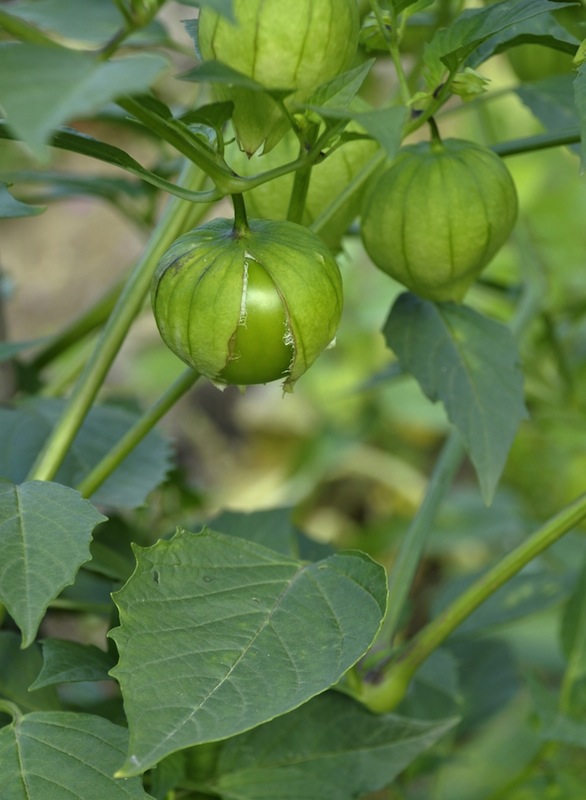New World's Oldest Tomatillo Discovered

A fossilized tomatillo, still in its papery shell, is the earliest fruit from the tomato family ever found in South America, researchers reported Oct. 30 at the Geological Society of America's annual meeting in Denver.
The 52.2-million-year-old tomatillo was discovered at the fossil-rich Laguna del Hunco, Argentina, where ancient lakebeds interlayer with volcanic ashes, providing paleontologists with precisely dated discoveries. (Minerals in the ash pin down the rock ages.)
"It's quite amazing," said Peter Wilf, a paleobotanist at Penn State University. "We've collected over 10,000 fossils and there's only one of these."
Though flattened, the ancient fruit (scientific name Physalis) looks remarkably like a modern version of the popular salsa ingredient. The fossil has a dark fruit enclosed by a ribbed calyx (a papery husk) just like modern Physalis, Wilf said. Both the fossil tomatillo and today's plants have husks with five major and five minor ribs, he added. The fossil is nearly an inch (23 millimeters) wide.
Tomatillos are members of the Solanaceae (nightshade) family, which includes tomatoes, potatoes and eggplants. Both fossil and genetic evidence suggests that Solanaceae plants originated and diversified in South America.
But until now, only fossil seeds attributed to Solanaceae plants have been discovered in South America — most of the family's early fossil history comes from Europe. The earliest South American tomato fossil larger than a seed is about 16 million years old. [Gallery of Fantastic Fossils]
"This is the first fossil anybody has ever seen of the entire tomato-potato-eggplant family," Wilf said. "It's also pretty old. This actually does match up pretty well with the idea that the Solanaceae family first diversified in South America."
Sign up for the Live Science daily newsletter now
Get the world’s most fascinating discoveries delivered straight to your inbox.
The discovery also pushes back the evolutionary history of the tomato family.
Scientists sequenced the tomato genome in May 2012. The tomato family molecular clock, based on the genetic data and fossil evidence, suggests the tomato genome expanded abruptly about 60 million years ago. A molecular clock estimates when species diverged in the past.
Now, thanks to the tomatillo find, the Solanaceae molecular clock is too young, Wilf said. During his talk, he listed 11 fossils from Laguna del Hunco, such as cycads, trees and the tomatillo, that show their molecular clocks are too young.
"Almost all of the molecular ages are younger than the fossils," Wilf said.
Wilf also reported two more striking fossils: Acorns and leaves from Castanopsis, the first oak ever found in South America, and the first evidence of the African cycad called Encephalartos from South America.
The two plants once populated a giant Gondwana forest that stretched across Australia, Antarctica, South America and Africa when the landmasses were joined in the supercontinent. Some of the ancient species still thrive in Australia and South Asian microclimates, or at Africa's southern tip, but most went extinct in South America.
Email Becky Oskin or follow her @beckyoskin. Follow us @livescience, Facebook & Google+. Original article on LiveScience.










